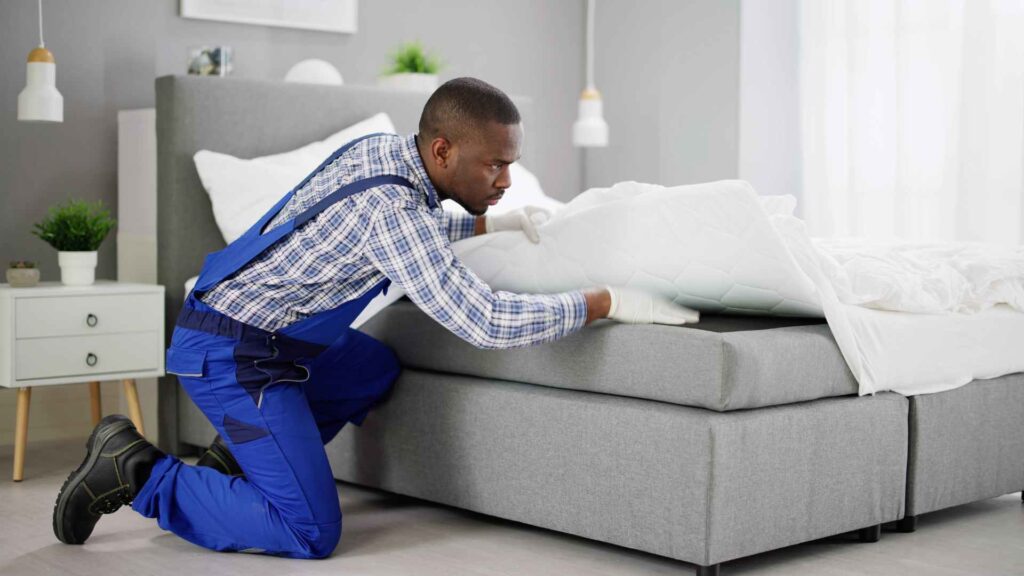Table Of Content
ToggleBed bugs. The very name sends shivers down spines. These tiny, blood-sucking insects are notorious for taking up residence in our beds, leaving itchy bites and a general sense of unease.
This comprehensive guide will equip you with everything you need to know about bed bugs in bed, from identifying the signs of an infestation to effective eradication strategies. By following these steps, you can reclaim your bed as a haven of peace and relaxation.
Bed bugs (Cimex lectularius) are wingless parasitic insects that feed on the blood of humans and other warm-blooded animals.
Unfortunately, bed bugs are stealthy squatters. But with a keen eye and some detective work, you can sniff them out and reclaim your sleep sanctuary. Here’s what to look for:

Bed bugs are like tiny ninjas, adept at hiding in plain sight. Here’s where to focus your inspection:

While bites are a common sign, they can also be mistaken for other insect bites. Look for these additional indicators:
Tailor your pest management strategy. Start now.
So, how exactly do these bloodsucking hitchhikers end up in your cozy bed? Here’s the unfortunate truth: bed bugs are excellent travelers, adept at catching a free ride to a new home.
Choose the best pest control frequency. Get expert guidance.
While bed bug bites are certainly a nuisance, the bigger concern might be the impact they have on your overall well-being. Here’s a look at how bed bugs can affect your health:
Living with bed bugs can be a real mental strain. Here’s how:

Now that you know how to identify bed bugs and the potential health risks they pose, it’s time to reclaim your bed! Here are some methods for eliminating these unwanted guests:
Ready to fumigate your home? Contact us today for a customized quote!

An ounce of prevention is truly worth a pound of cure when it comes to bed bugs. Here are some key strategies to keep your home a bed bug-free haven:
As a pest control expert, I’ve seen firsthand the distress bed bugs can cause. Early detection is key to successful eradication. By following the tips in this guide, you can identify bed bugs in your bed, take action to eliminate them, and prevent future infestations.
Remember, if you suspect a bed bug problem, don’t hesitate to seek professional help. A qualified pest control service will have the expertise and resources to get rid of bed bugs quickly and effectively, allowing you to reclaim a peaceful sleep.
You can know if your bed has bed bugs by looking for visual signs such as small reddish-brown bugs, tiny white eggs, shed skins, blood stains on your sheets, and a musty odor in the area.
The main cause for bed bugs is typically travel, as these pests are often transported in luggage, clothing, and second-hand furniture, allowing them to infest new areas.
Yes, you can get rid of bed bugs in your bed by using a combination of heat treatments, vacuuming, steam cleaning, and chemical insecticides, often requiring professional pest control services for effective eradication.
Bed bugs do not typically hide on your body; instead, they prefer to hide close to where you sleep, such as in the seams of mattresses, bed frames, and headboards, coming out to feed on your blood while you are asleep.
Your trusted pest control experts in Southern California. Keeping your neighborhood pest-free!